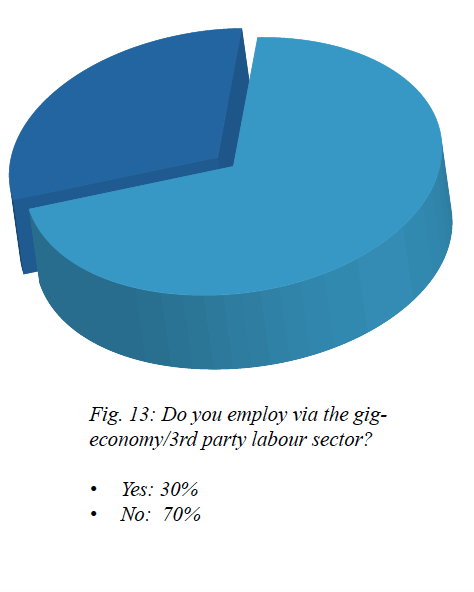Continuing our series of articles analysing the results of an exclusive Field Service News Research project run in partnership with FieldAware, we look at whether the delayed impact of the pandemic will see a rise in use of the gig-economy in field service…
Another aspect that could emerge within such a hybrid model could be the rise in prominence of the gig-economy within the field service sector. In a 2019 white paper and accompanying video series published by Field Service News, a series of arguments were put forward as to why the field service sector should embrace the gig-economy.
Now less than a year later as the sector begins to contemplate how we can recover from the backlog of nearly six months of stunted operations – turning to the gig economy suddenly seems to be something that every field service company should be embracing.
Yet, the study shows that this is yet to become the case with over two-thirds of companies still not employing via the gig-economy or utilising 3rd party labour at all. (Figure 13)
Of those field service companies that are using such contingent labour pools, the sweet spot in terms of the balance of the workforce appears to be between a tenth and a quarter of the workforce being third party labour – which over a third of companies (36%) state is the blend between internal and external workers that they currently have in place.
However, one sign that the gig-economy in field service may be ready to develop more rapidly than it has done before (beyond the obvious market drivers of the pandemic), is that from a technology standpoint it is now a lot easier to integrate third party workers into the same workforce management system as internal workforce.
In fact, of those companies that are using the gig economy over half (55%) are currently doing so.
One final important data point to note is that currently the gig-economy is being positioned amongst field service organisations to cover a different set of tasks to the internal workforce.
Over three quarters (82%) of companies who operate a blended workforce allocate different types of jobs for third party workers than they do to their internal workers.
In the next phase of the research project, during our interview series, we shall look a little bit closer at the split, however, the most obvious assumption would be that the more routine tasks are handed out to the gig-economy freeing up the internal workers to utilise their industry expertise to bring value to the organisation in the more complex work.
 Want to know more?
Want to know more?
You can find the full paper in the premium resource library.















